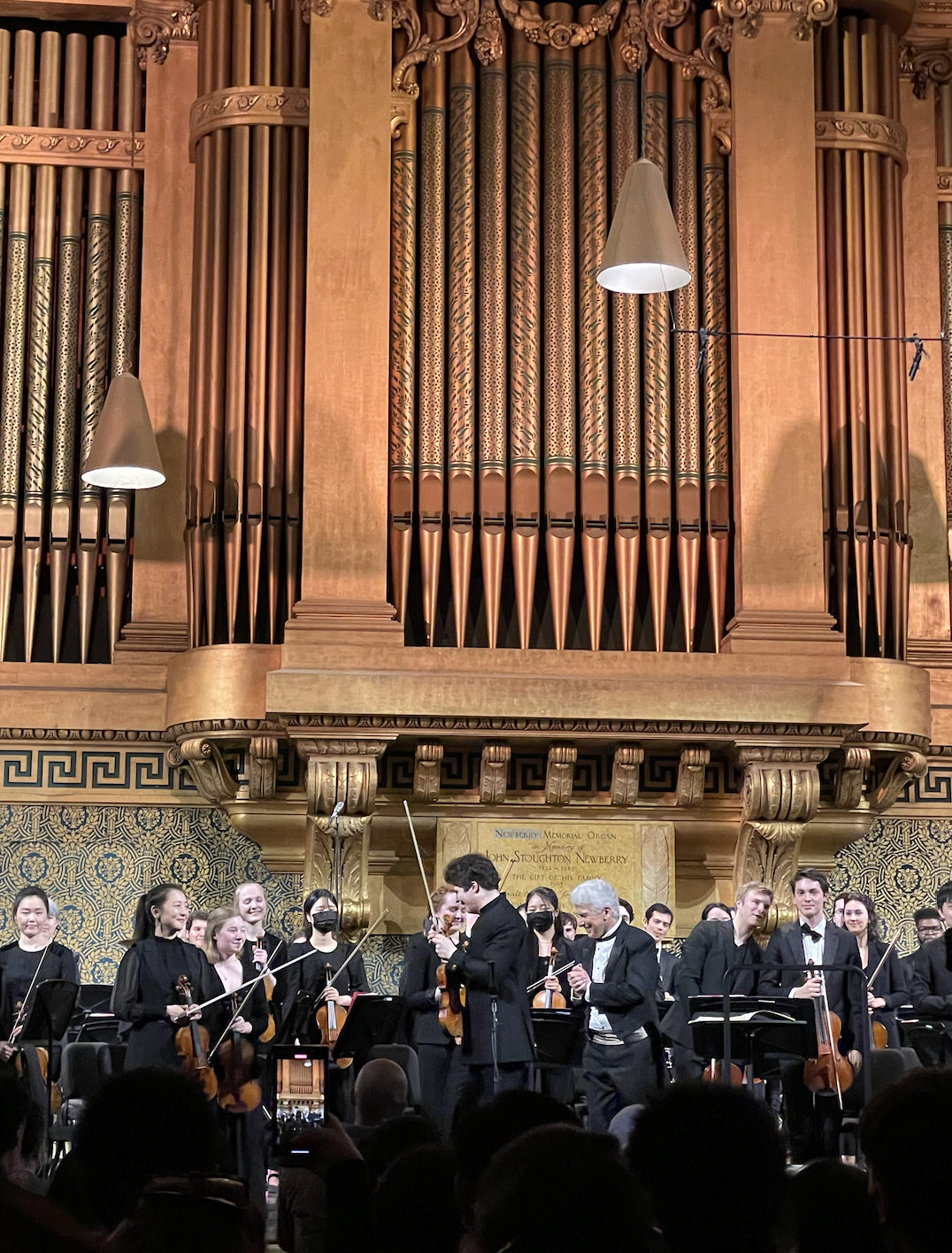Augustin Hadelich, Yale Philharmonia perform concert
On Thursday night, the Yale Philharmonia performed Brahms’ Violin concerto with Augustin Hadelich in addition to a new critical edition of Bruckner’s Seventh Symphony created by Paul Hawkshaw.

Miriam Viazmenski, Contributing Photographer
World-renowned violinist Augustin Hadelich first learned the Brahms Violin Concerto when he was 10. In the nearly thirty years since, has performed it dozens of times all over the world. Hadelich’s mastery of the concerto shone when the Grammy award-winning professor of violin at the School of Music played the work last week in Woolsey Hall.
On Thursday evening, the Yale Philharmonia — led by Grammy nominated principal conductor Peter Oundjian — performed Brahms’ Violin Concerto in D Major, Op. 77 with Hadelich in addition to a new edition of Bruckner’s Seventh Symphony created by Professor Emeritus of Music Paul Hawkshaw.
“It’s one of those pieces that every time I return to it as an adult, I felt like I could find even more in the piece and get back more from the piece,” Hadelich said of the Brahms work. “I became more aware of the interaction of the violin with the orchestra and how beautiful it is that you are always hearing the violin with the instruments in the orchestra … that’s the reason why it never gets old.”
Most performances of Brahms’ Violin Concerto are played with Joseph Joachim’s cadenza — a virtuosic solo passage in the middle of a concerto — in the first movement.
But Hadelich wrote his own cadenza a few years ago and performed it on Thursday night.
“[Writing my own cadenza] helped me play the rest of the piece because I was basically composing with Brahm’s material, getting to know the material better in, in a different way,” Hadelich said. “It’s brought me even closer to the music.”
To Hadelich, what makes Brahms’s Violin Concerto so special is its “back and forth dialogue” between the orchestra and the soloist.
“There’s a really intense excitement that comes from playing with student orchestras as opposed to playing with professional orchestras,” Hadelich said. “I [was] really excited to play with [the Yale Philharmonia] because it’s such a collaborative piece … and their excitement is contagious.”
Hadelich described the stage as “one of his favorite places to be these days,” elaborating that his nerves melt into energy when he steps onto it.
A nearly-full Woolsey Hall gave Hadelich a standing ovation after his performance, prompting him to perform an encore, his arrangement of Carlos Gardel’s “Por Una Cabeza.”
“He’s probably one of the greatest, if not the greatest, living violinists in the world,” said Emily Shehi MUS ’23, one of Hadelich’s four current students at the School of Music.
After an intermission, the Yale Philharmonia performed Hawkshaw’s new critical edition of Bruckner’s Seventh Symphony. As co-editor of the “New Anton Bruckner Complete Edition,” Hawkshaw started working on creating complete editions of Bruckner’s works twelve years ago.
On this particular edition, Hawkshaw said, he spent the past five years working with the Seventh Symphony’s autograph manuscript in Vienna.
“In the case of creating this edition, it was largely a question of working from the autograph score and then consulting the first edition to see where the differences were,” Hawkshaw said. “The real challenge lay in the awful lot of changes that took place between when he composed the piece in 1883 and when it was published in 1885—some of these changes were in his hand and others were in the hand of one of his students, and the real trick was trying to figure out which of the changes had Bruckner’s approval. The ones that didn’t, in a critical edition like this, need to be taken out.”
Hawkshaw’s next project is a critical edition of Bruckner’s Second Symphony.







